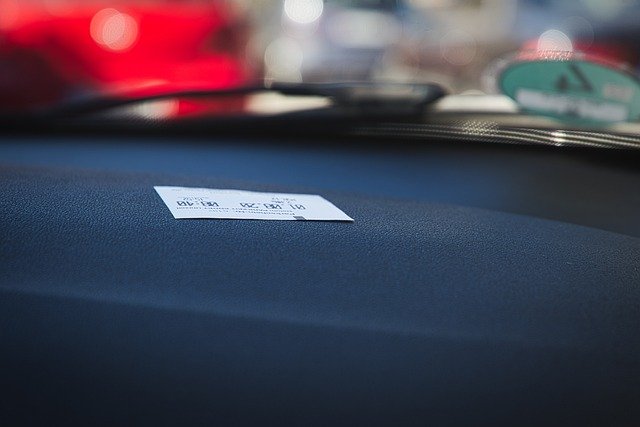The Legal Journey of an Impounded Car: From Tow Truck to Auction Block
When a vehicle is impounded, it begins a carefully regulated journey that stretches from the first tow to its ultimate resolution—whether that means retrieval by the owner or lawful disposal. This article explains each stage of that process in plain language and highlights the key legal safeguards and consumer protections that ensure fairness and transparency for everyone involved.

How Vehicles Become Impounded in the US and UK
In both the United States and United Kingdom, vehicles can be impounded for several similar reasons, though specific procedures vary by jurisdiction. Common causes for impoundment include parking violations, driving without valid insurance or registration, abandonment, involvement in criminal activity, or recovery after theft.
In the US, local police departments and municipal authorities typically handle impoundment. The process begins when an officer or parking enforcement official identifies a violation. The vehicle is then towed to a designated impound lot operated either by the government entity or a contracted private company.
In the UK, the process follows a similar pattern, with the Driver and Vehicle Licensing Agency (DVLA), local councils, and police forces authorized to impound vehicles. The UK system places particular emphasis on vehicles lacking proper tax or insurance, with dedicated DVLA enforcement teams actively searching for non-compliant vehicles.
Legal Notification Requirements and Timeframes
After impoundment, both countries have established notification procedures to inform registered owners about their vehicle’s status. In the US, local laws typically require authorities to send written notification to the registered owner at their last known address within 48 hours of impoundment. This notification must include the reason for impoundment, location of the vehicle, procedures for retrieval, applicable fees, and deadline before the vehicle may be auctioned.
The UK follows comparable notification requirements. The DVLA or police must attempt to contact the registered keeper using information from the vehicle registration database. UK law generally provides a minimum 7-day notice period before further action is taken, though this can vary depending on the specific violation.
Both systems establish a legal timeframe during which owners may reclaim their vehicles by paying accumulated fees. This period typically ranges from 14 to 30 days in the US, while the UK generally allows 7 to 14 days depending on the circumstances of impoundment.
Vehicle Owner Rights and Reclamation Process
Vehicle owners in both countries maintain specific rights throughout the impoundment process. In the US, owners have the right to contest the impoundment through an administrative hearing if they believe the seizure was improper or unlawful. They also maintain the right to retrieve personal property from the vehicle even if they cannot pay impoundment fees.
To reclaim an impounded vehicle in the US, owners must generally provide proof of ownership (title or registration), valid identification, proof of insurance, and payment of all associated fees including towing charges, daily storage fees, and any outstanding violations that led to impoundment.
The UK system offers similar protections. Vehicle owners can appeal impoundment decisions through established administrative channels. To reclaim their vehicle, UK residents must present proper identification, proof of ownership, current insurance documentation, and valid tax. They must also pay release fees, which typically include a fixed release charge plus daily storage costs.
In both countries, failure to reclaim a vehicle within the specified timeframe initiates the process toward potential auction.
How Local Authorities Prepare Vehicles for Auction
When the legal holding period expires without the owner reclaiming the vehicle, authorities begin preparing it for auction. This process includes several standardized steps in both countries.
First, authorities conduct a thorough inventory of the vehicle, documenting its condition and any personal belongings left inside. In most jurisdictions, personal items must be cataloged and stored separately for potential return to the owner.
Next, the government entity must secure legal title to the vehicle. In the US, this typically involves applying for an abandoned vehicle title through the state department of motor vehicles. The UK follows a similar process through the DVLA to establish clear government ownership before sale.
Finally, basic preparation for sale occurs, which may include minimum cleaning and sometimes basic mechanical inspections, though most impound auctions sell vehicles “as-is” with limited or no warranties. Vehicles are assigned lot numbers and cataloged with basic information such as make, model, year, and visible condition details.
The Auction Process and Bidder Requirements
Impound auctions operate through several formats depending on the jurisdiction. In the US, traditional in-person auctions remain common, though online platforms have grown significantly in popularity. Some jurisdictions use sealed-bid processes where bidders submit confidential offers.
The UK increasingly favors online auction platforms, though traditional physical auctions still occur regularly. Both countries typically publish auction catalogs in advance, listing available vehicles with basic information.
Bidder requirements are similarly structured in both nations. Potential buyers generally must:
-
Register as bidders before the auction
-
Provide valid identification and contact information
-
Make a refundable deposit in many cases
-
Agree to auction terms and conditions
-
Be prepared to pay in full shortly after winning (often within 24-48 hours)
Most auctions operate on an “as-is, where-is” basis, meaning vehicles come with no warranties or guarantees regarding condition or operability. Successful bidders typically receive a bill of sale and transfer documents but may need to complete additional paperwork to register the vehicle in their name.
Cost Considerations When Buying Impounded Vehicles
Purchasing impounded vehicles can offer significant savings compared to traditional dealerships or private sales, but buyers should understand the full financial picture before bidding.
| Auction Type | Typical Starting Bids | Additional Fees | Average Savings vs. Retail |
|---|---|---|---|
| US Police Impound | $200-$1,000 | $50-$200 documentation fees | 40-70% |
| UK Council Auctions | £300-£1,500 | £100-£250 buyer’s premium | 30-60% |
| Online Impound Auctions | Varies by platform | Platform fees (3-10%) | 25-50% |
Prices, rates, or cost estimates mentioned in this article are based on the latest available information but may change over time. Independent research is advised before making financial decisions.
Beyond auction prices, buyers should budget for potential repair costs, as impounded vehicles often require maintenance after sitting in storage. Transportation costs from the auction site should also be considered, along with title transfer fees and taxes applicable in your jurisdiction.
Many successful impound auction buyers report finding vehicles that require minimal investment to return to roadworthy condition, while others specifically seek vehicles for parts or restoration projects where initial condition is less important than acquisition cost.
After the Sale: Title Transfer and Registration Process
Once a vehicle is purchased at auction, the buyer must complete several steps to legally transfer ownership. In the US, this typically involves taking the bill of sale and auction documentation to the state DMV to apply for a new title and registration. Some states require additional paperwork for vehicles sold through impound auctions, such as abandoned vehicle affidavits.
The UK process requires the new owner to complete a V5C registration document (log book) application through the DVLA. The auction house generally provides the necessary transfer documentation, but buyers remain responsible for completing the registration process.
Both countries require payment of applicable taxes and fees during this transfer process. New owners are also responsible for ensuring vehicles meet local roadworthiness requirements before driving them on public roads, which may include emissions testing or safety inspections depending on the jurisdiction.
Through this structured legal journey—from impoundment to auction—vehicles transition from private ownership through government custody and potentially to new owners, all within a framework designed to balance enforcement needs with property rights and public interest.




